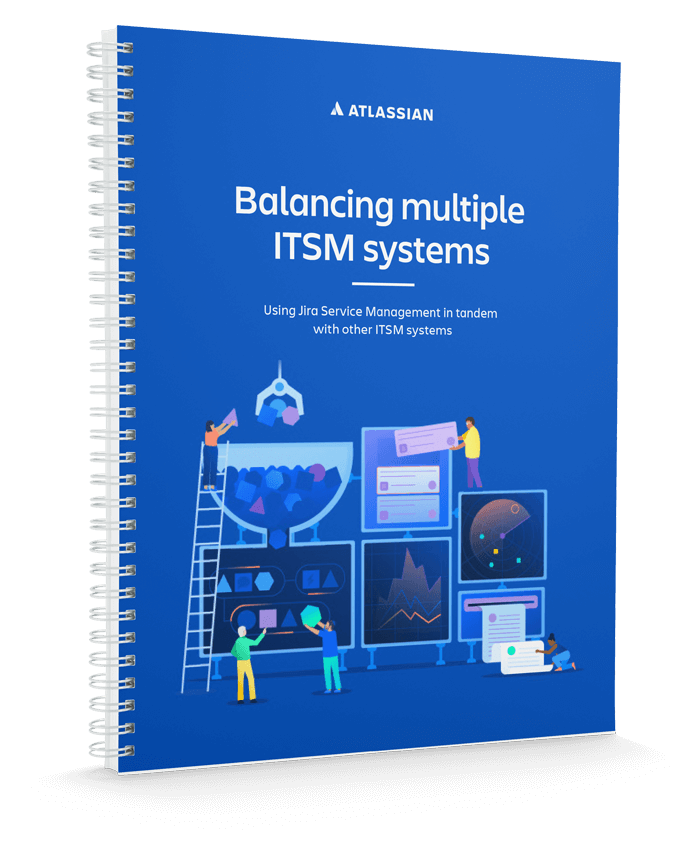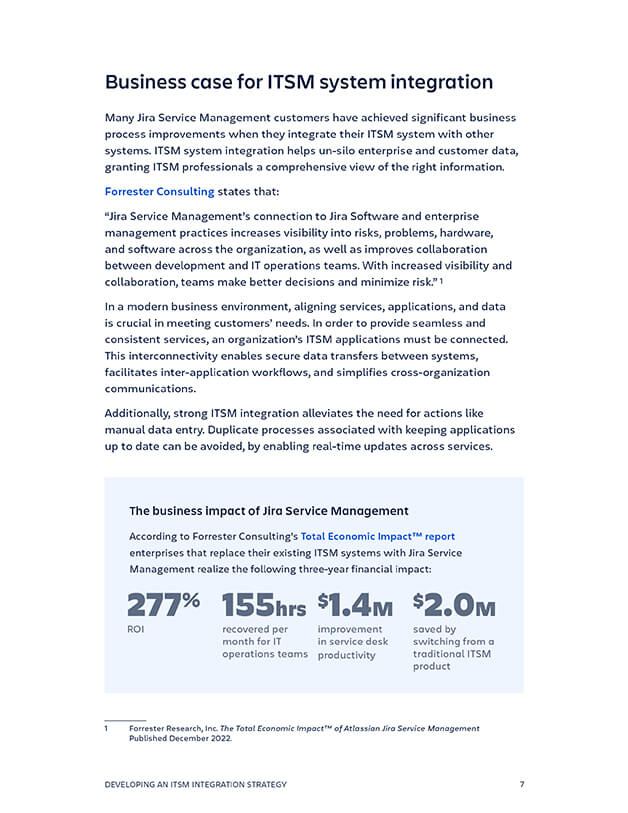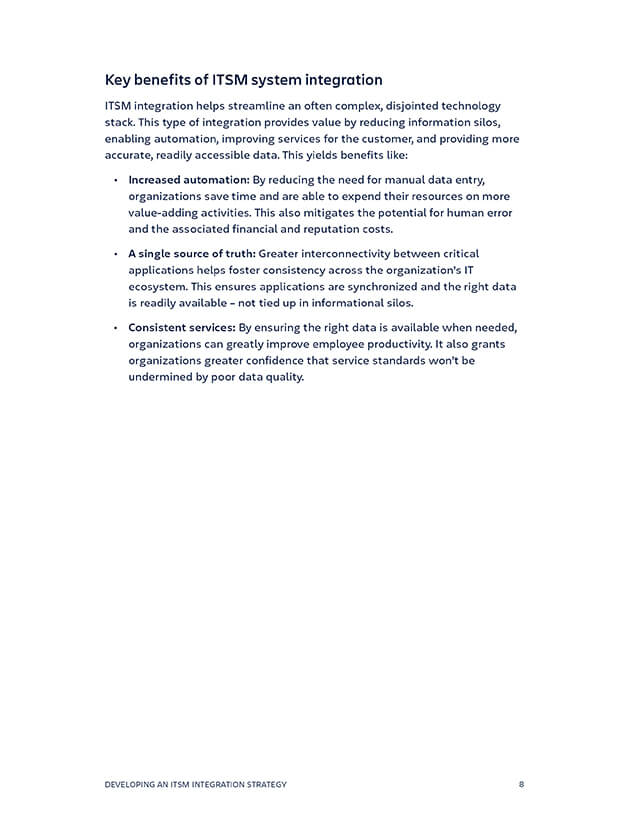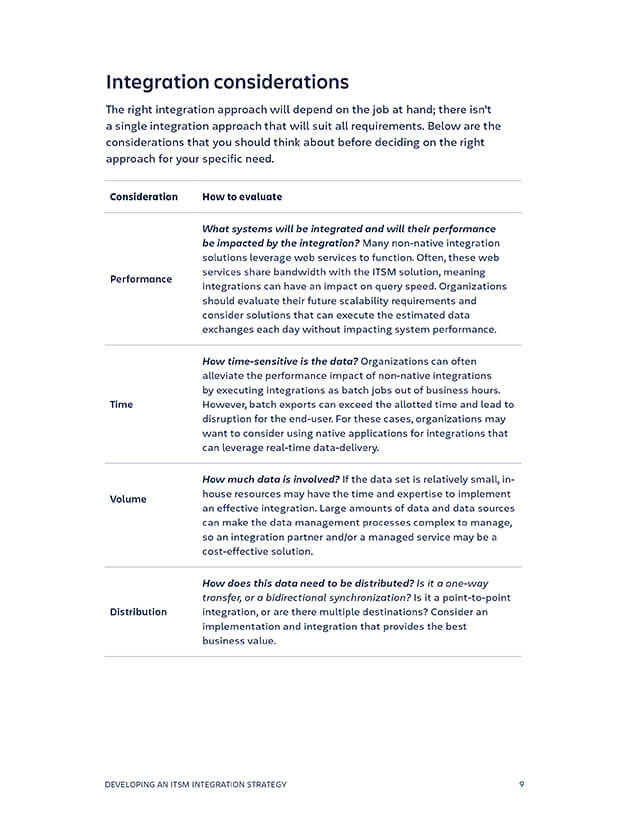
FREE DOWNLOAD
A guide to using Jira Service Management with other ITSM systems
In this whitepaper, you’ll learn about Atlassian’s approach to integrating Jira Service Management with other ITSM systems, with examples of what a successful integration can look like for you and your team.
Executive summary
Inconsistent tooling across teams makes for disjointed, complex tech stacks. Integrating an existing ITSM system with Jira Service Management can help break those silos down, and save on license costs along the way.
In this whitepaper, you’ll learn how integrating an existing ITSM system with Jira Service Management can reduce costs, create more opportunities for automation, connect critical applications, and maintain consistent services for better employee productivity.
Key takeaways
Discover how teams use multiple ITSM systems to reduce license cost while maintaining connectivity
Learn best practices for building an ITSM integration strategy
See tactical examples of how teams integrated Jira Service Management with other ITSM systems
PDF content preview
Business case for ITSM system integration
Many Jira Service Management customers have achieved significant business process improvements when they integrate their ITSM system with other systems. ITSM system integration helps un-silo enterprise and customer data, granting ITSM professionals a comprehensive view of the right information.
In a modern business environment, aligning services, applications, and data is crucial in meeting customers’ needs. In order to provide seamless and consistent services, an organization’s ITSM applications must be connected. This interconnectivity enables secure data transfers between systems, facilitates inter-application workflows, and simplifies cross-organization communications.
Additionally, strong ITSM integration alleviates the need for actions like manual data entry. Duplicate processes associated with keeping applications up to date can be avoided, by enabling real-time updates across services.
Key benefits of ITSM system integration
ITSM integration helps streamline an often complex, disjointed technology stack. This type of integration provides value by reducing information silos, enabling automation, improving services for the customer, and providing more accurate, readily accessible data. This yields benefits like:
- Increased automation: By reducing the need for manual data entry, organizations save time and are able to expend their resources on more value-adding activities. This also mitigates the potential for human error and the associated financial and reputation costs.
- A single source of truth: Greater interconnectivity between critical applications helps foster consistency across the organization’s IT ecosystem. This ensures applications are synchronized and the right data is readily available – not tied up in informational silos.
- Consistent services: By ensuring the right data is available when needed, organizations can greatly improve employee productivity. It also grants organizations greater confidence that service standards won’t be undermined by poor data quality.
PDF preview



Get the whitepaper
Best practices for using multiple ITSM systems